20 Vegan Hiking Snacks You’ll Actually Crave on the Trail
Hitting the trails together means we need snacks that keep up with our adventures and fit our plant-based lifestyle. We all know the challenge of finding food that’s easy to carry, tastes good, and gives us lasting energy when we’re out exploring.

The right vegan hiking snacks help us stay fueled, satisfied, and ready for whatever the trail brings.Let’s get inspired to pack our backpacks with options that are just as fun and delicious as our time outdoors.
Disclosure: This post contains affiliate links and might earn us a small commission if you make a purchase at absolutely no extra cost to you.
1) Trail mix with cashews, cranberries, and dark chocolate
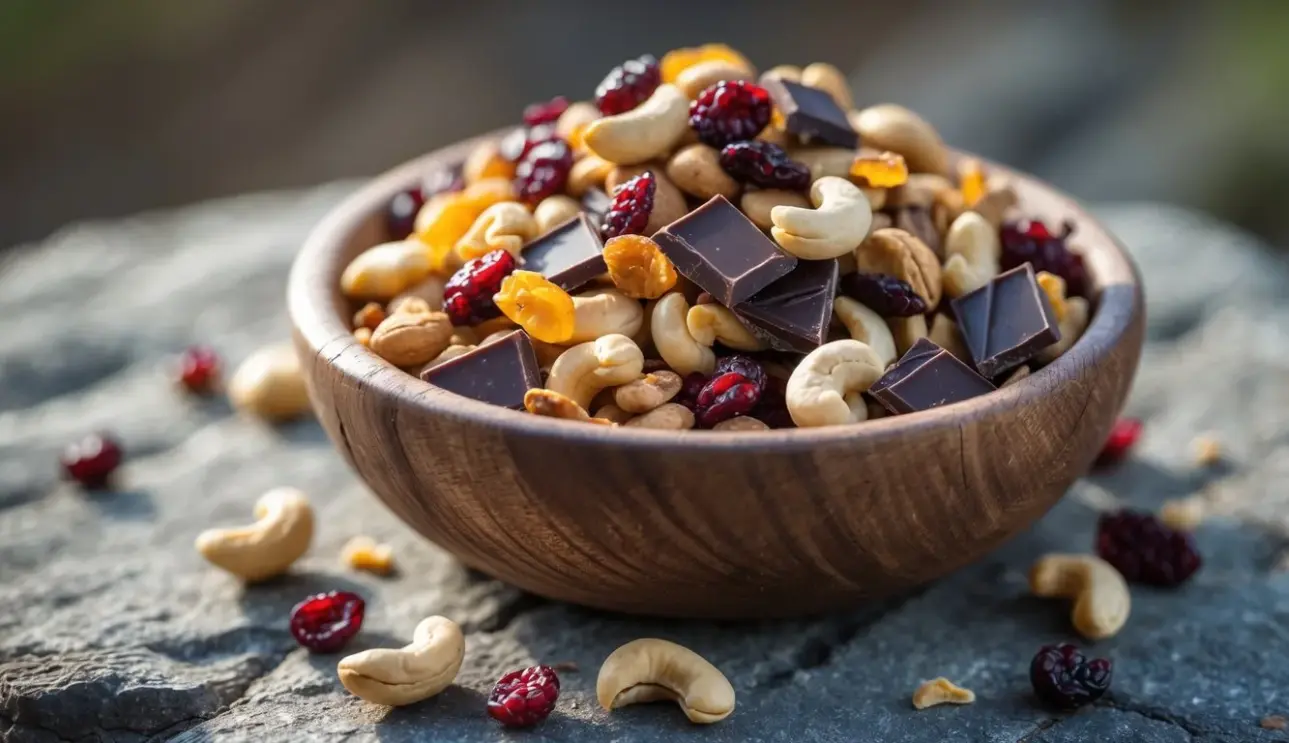
When we’re out on the trail, there’s nothing better than digging into a handful of trail mix. One of our favorite combos is cashews, cranberries, and dark chocolate.
It’s a classic snack that hits every craving—sweet, salty, and just a little bit rich. We love how easy it is to put together.
Usually, we grab some roasted cashews, toss in dried cranberries for a bit of tartness, then add in dark chocolate chips or chunks. Every bite is a total treat.
This mix isn’t just tasty—it’s got some real staying power. Healthy fats from the cashews, natural sugar from the cranberries, and a little boost from the chocolate help keep our energy up.
We often prep a big batch before a trip and portion it out into small bags. If you want to try a slightly different version, you can add almonds or swap the cranberries for raisins.
It’s super flexible, and everyone can find their own favorite way to enjoy it. Some trail mixes, like this cranberry, cashew, and dark chocolate mix, are even available pre-made if we don’t feel like mixing it up ourselves.
2) Clif Bars – classic energy booster
When we’re on the trail and hunger hits, Clif Bars are one of our go-to snacks. They’re quick, filling, and totally plant-based.
We love that they come in so many flavors—chocolate chip always feels like a treat, while peanut butter keeps us energized for miles. What makes Clif Bars stand out for us is how convenient they are.
We can toss them in any backpack or even a jacket pocket. No need to worry about them getting squished.
Clif Bars are also made with organic oats and other simple ingredients, which gives us peace of mind. If you’re looking for something real to eat on a hike, these bars check the box.
They’re vegetarian, kosher, and plant-based, so we can all share, whatever our food preferences may be. We’ve relied on Clif Bars through cold mornings and hot afternoons—they’ve never let us down.
There’s something comforting about knowing we have a trusty snack ready when we need it.
3) Luna Bars for a sweet and salty fix
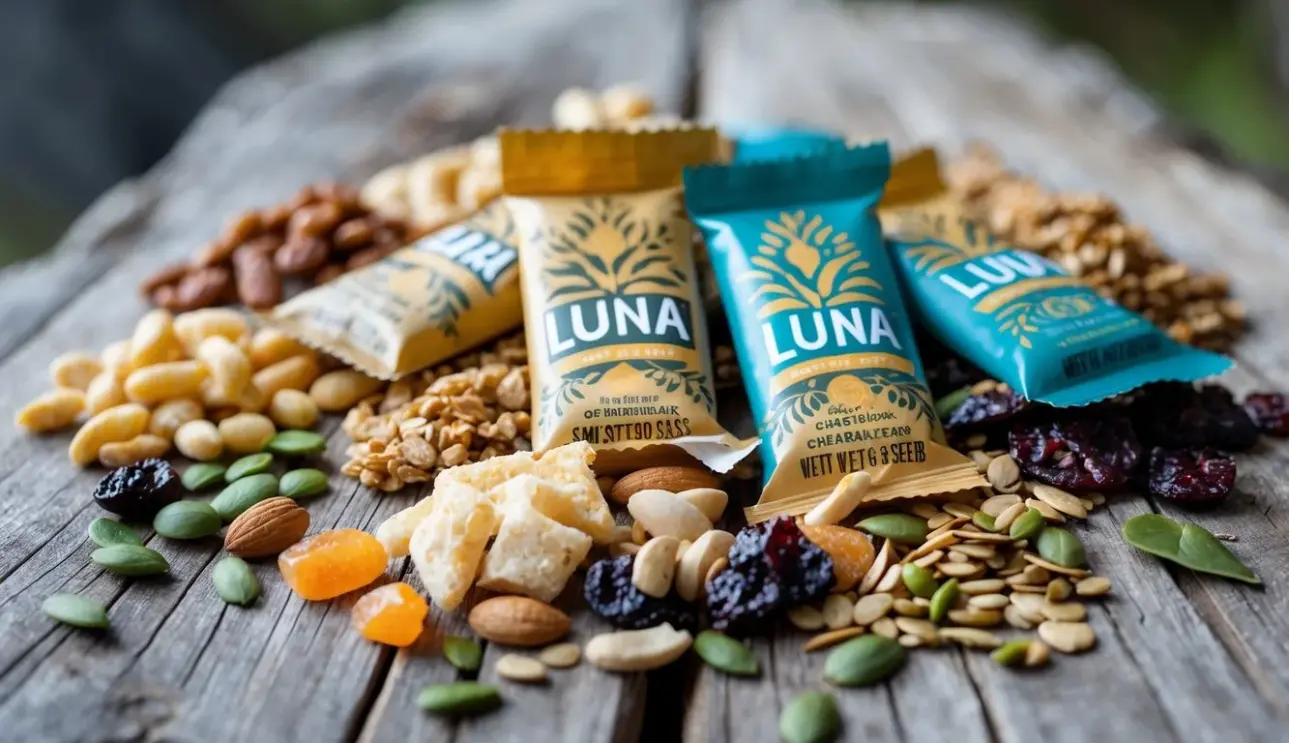
When we’re out on the trail, sometimes nothing hits the spot like a little sweet and salty combo. That’s where Luna Bars come in.
They’ve got flavors like chocolate, coconut, and lemon that always seem to give us that quick pick-me-up. We love that they fit right into our backpack without getting smashed.
Their gluten-free recipe and plant protein keep us going without weighing us down. If you’ve ever had a craving for something both indulgent and energizing, these bars totally deliver.
Choosing between flavors can be tough. We’re especially fans of the LemonZest—it’s bright and tangy and really perks us up when we start to drag.
If you like mixing it up, the Chocolate Dipped Coconut is another winner. What makes Luna Bars extra handy is how portable and mess-free they are.
There’s just something comforting about having a familiar snack like this when we’re miles from the nearest café. If you want to check out all the flavors or peek at allergy info, try visiting Luna Bar’s official site.
4) Roasted chickpeas for a crunchy protein punch
When we’re packing snacks for a hike, roasted chickpeas always make the cut. They’re super crunchy and fill us up with plant-based protein.
We love how easy they are to take along—no fridge needed and no mess in our bags. It’s simple to whip up a batch at home.
All we need are canned chickpeas, a little olive oil, and our favorite spices. After roasting, they turn golden and crispy—so satisfying to bite into, especially when we want something salty and savory.
If we don’t feel like cooking, stores carry tasty options like Barbecue roasted chickpeas. But honestly, making them ourselves means we can experiment with flavors like smoked paprika, garlic, or even cinnamon for something sweet.
We sometimes toss them into salads or trail mixes, too. Every handful gives us protein and fiber, which helps keep our energy steady on the trail.
Roasted chickpeas have become one of those snacks we genuinely look forward to sharing. Let’s make a batch together for our next adventure!
Enjoy a satisfying crunch and a boost of plant-based protein with this 6-pack of roasted chickpea snacks, featuring flavors like BBQ, Habanero, Honey Roasted, Lil' Bit of Everything, Sea Salt, and Rockin' Ranch. Each serving packs 5-6 grams of protein and fiber, making them a delicious, nutritious, and allergy-friendly alternative to chips—perfect for snacking straight from the resealable bag or adding to salads. These non-GMO, gluten-free, and vegan snacks are made in the USA and ready to fuel your day anytime, anywhere.
5) Vegan jerky for that savory chew
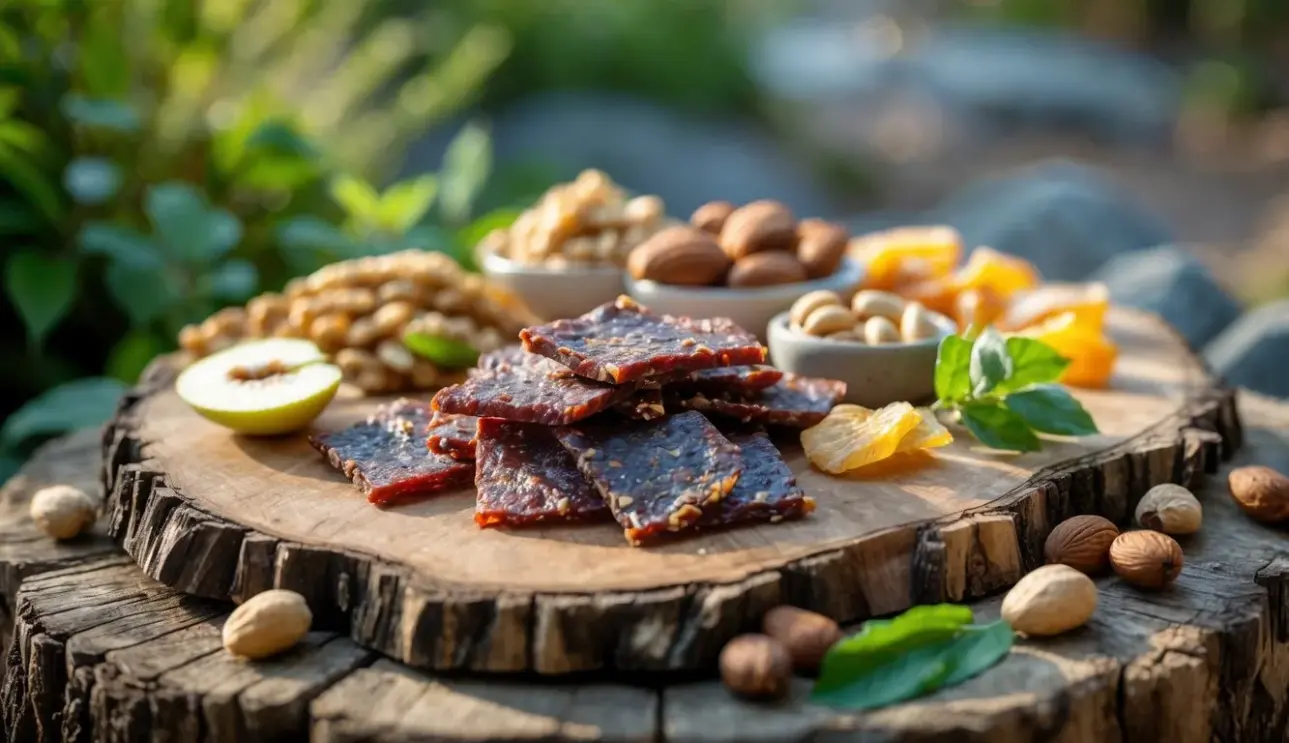
When we’re out on the trail, sometimes we crave something savory and filling. That’s where vegan jerky steps in.
It gives us that satisfying chew we usually miss from traditional jerky, but without any animal products. There are tons of options now, made from things like soy, wheat gluten, or even mushrooms.
Some have more spice, others are smoky, but all are plant-based. We love stashing a few packs in our backpacks because they don’t take up much room and stay fresh for a long time.
Brands like AGRO POWER Vegan Jerky, All Y’all’s Foods, and Pleather Vegan Jerky each bring their own twist.
Jerky packs a good protein punch, making it a popular grab-and-go snack for us during longer hikes. We like to mix it up and try different flavors so snack breaks never get boring.
6) Dried mango slices for a tropical treat
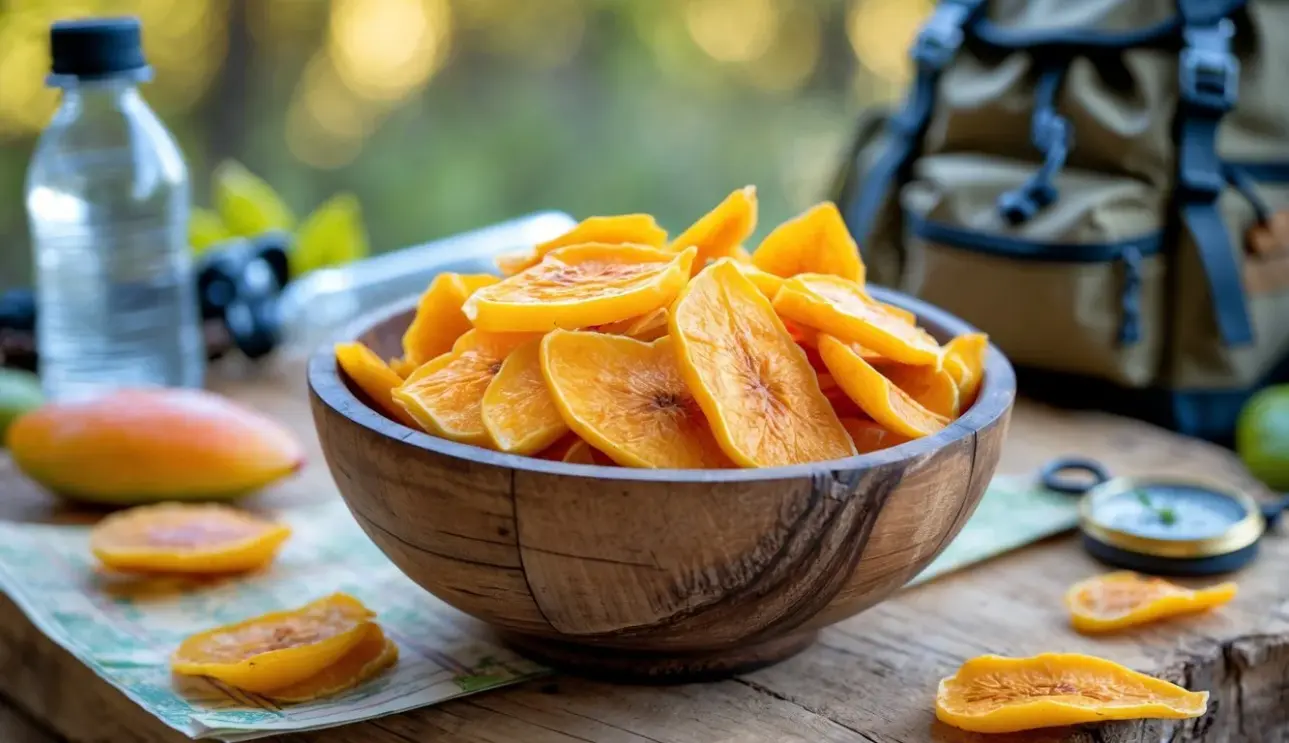
Sometimes we all need something sweet and a little special on the trail. That’s where dried mango slices come in.
They’re just the pick-me-up we need on a tough uphill climb. We love how naturally sweet dried mango can be without loads of extra sugar.
It feels like a little taste of the tropics, right in our backpack. There are even options out there that keep things simple: just mango, no preservatives or added sugar, like these organic dried mango slices.
Dried mango is super easy to pack. It doesn’t squish or go bad in the heat, so it’s great for long days on the move.
Plus, it’s vegan and gluten-free, so everyone in our group can snack with us. Tossing a few slices into our pocket makes snack breaks feel brighter.
7) Homemade granola bars with oats and nuts
Store-bought granola bars just don’t compare to homemade ones. When we make our own, we get to pick every ingredient and skip all the weird extras.
Oats and nuts are non-negotiable—they bring that crunch and give us plenty of energy for long hikes. We usually stir in peanut butter or tahini to help everything stick, and a bit of maple syrup for sweetness.
Sometimes we toss in dates for extra chew and natural flavor. With just a few steps, we end up with snacks that are filling, easy to carry, and taste so much better than anything prepackaged.
What I love most is how flexible these bars are. Want more sweetness? Toss in raisins or chocolate chips.
Craving more crunch? Go heavy on the almonds or pumpkin seeds. If you want a simple recipe to start with, check out these healthy 5-ingredient granola bars.
We like to wrap a few before every trip, so we’re never without a quick, homemade snack on the trail.
8) Energy bites packed with peanut butter and seeds
When we’re heading out, we always grab a few homemade energy bites. There’s just something about that mix of creamy peanut butter and crunchy seeds that gives us a boost for those uphill climbs.
They’re super easy to throw together—no baking, just mixing and rolling. We start with rolled oats, a big scoop of peanut butter, a little maple syrup, and a handful of seeds like chia, sunflower, or pumpkin.
Sometimes we add dark chocolate chips or dried fruit for a treat. Everything gets rolled into little balls that are perfect for grabbing on the go.
One of the best things is how customizable these bites are. We can swap out ingredients depending on what’s in the pantry.
These no-bake peanut butter energy balls are loaded with fiber, protein, and healthy fats to keep us going. Every time we take a bite, it honestly feels like a little reward for the effort.
9) Apple slices with almond butter
We all want easy snacks that taste good and keep us energized. Apple slices with almond butter totally nail it.
It’s sweet, crunchy, creamy, and takes maybe a minute to throw together. All we need is an apple, a bit of almond butter, and maybe some cinnamon if we’re feeling fancy.
Sometimes we get wild and sprinkle on granola or chia seeds. It’s amazing how a classic combo can feel new just by switching it up.
For hiking, apples hold up well in our bags, and almond butter travels easily in single-serve packets or a small container. Slicing the apple at the last minute keeps it fresh and crisp.
These bites feel like a treat after a long stretch of hiking. If you want inspiration for toppings and a simple method, here’s a version of apple slices with almond butter we love.
10) Dates stuffed with walnuts
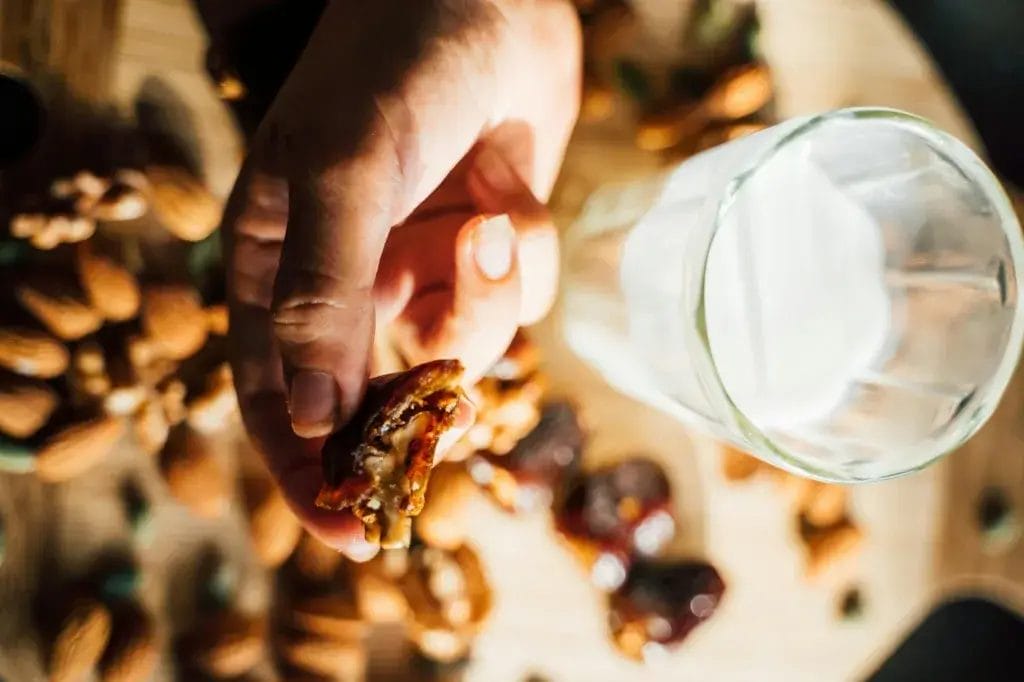
Sometimes we crave something sweet and filling during a hike, but don’t want to pack anything messy. That’s where dates stuffed with walnuts come in.
They’re ridiculously easy to make. Just slice open a date, pull out the pit, and pop in a walnut half.
The chewy date and crunchy walnut combo always hits the spot, giving that sweet and nutty bite in one little snack. Dates give us quick energy from natural sugars, while walnuts add healthy fats and a bit of protein.
This snack travels so well. No melting, no going stale. For a twist, add a bit of nut butter before stuffing in the walnut, like in this stuffed date recipe.
If you want, make a whole batch before the trip and keep them in a small container. They’re perfect for sharing with friends on the trail when everyone needs a boost.
11) DIY kale chips with a smoky flavor
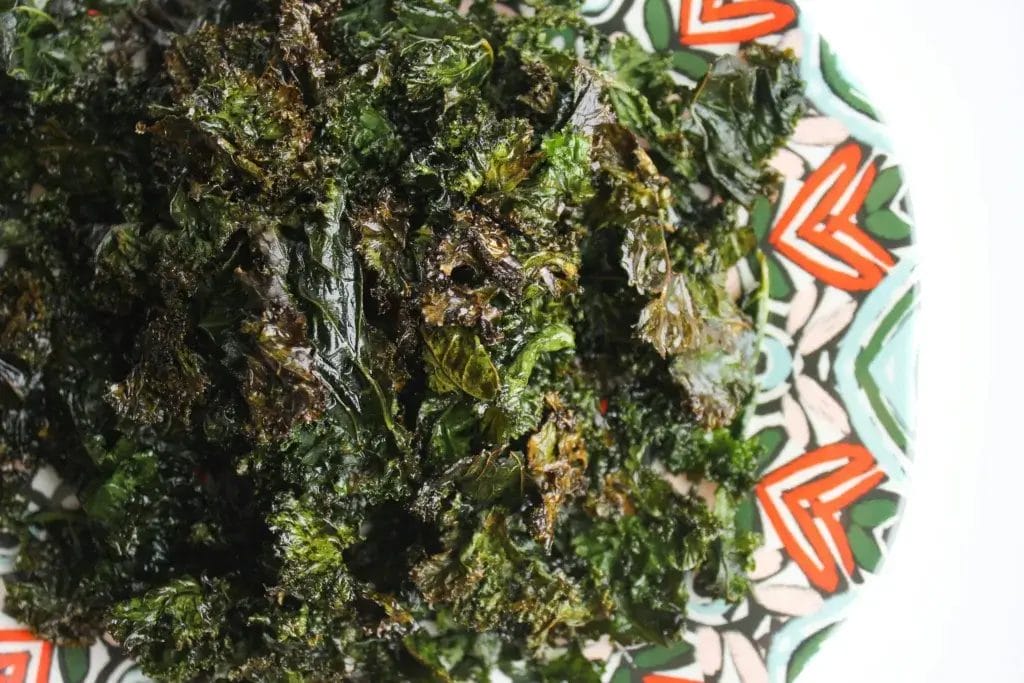
Sometimes, we just want a crunchy, salty snack on the trail. That’s where our DIY smoky kale chips come in.
They’re light, easy to pack, and way healthier than most chips we’d grab at the store. We start with fresh kale leaves, wash and dry them, then toss with olive oil and smoked paprika, cumin, chili powder, and a pinch of salt.
This mix creates that signature smoky kick, inspired by this spicy, smoky recipe. It only takes about 15 to 30 minutes to bake them until crisp.
The hardest part is not eating them all at once. We like portioning them into small bags for hikes—they’re light to carry and make snack time feel a little special.
If we want to change up the flavor, a dash of red pepper flakes adds some heat. These kale chips prove we don’t need to give up flavor just because we’re out on the trail.
12) Peanut butter and jelly sandwiches on whole grain bread
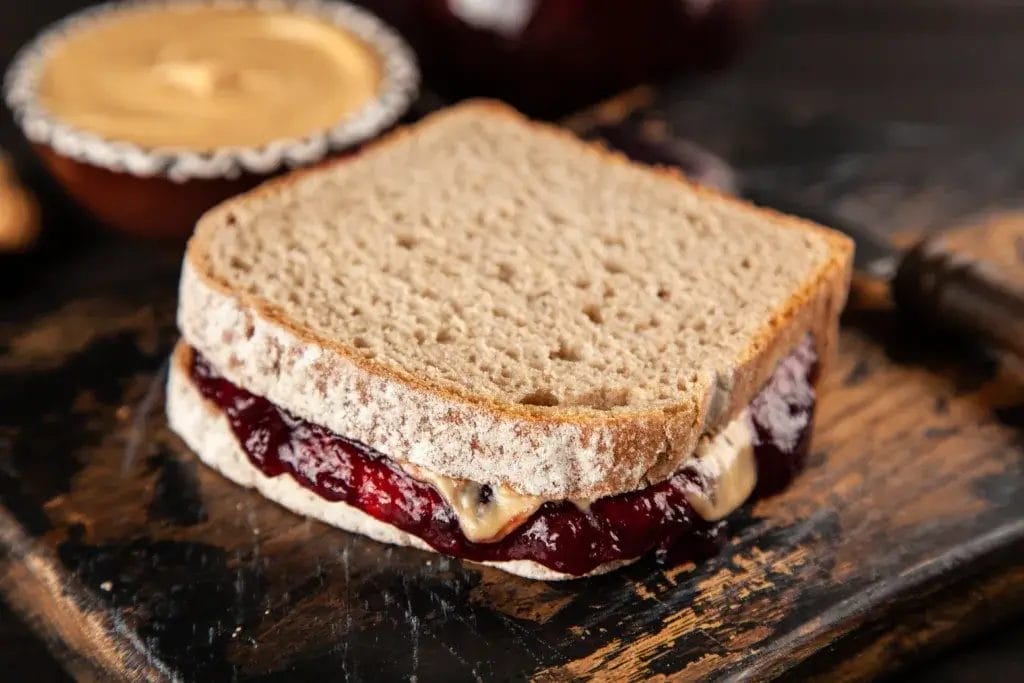
There’s something comforting about biting into a peanut butter and jelly sandwich. It takes us back to childhood and actually fuels us for hiking.
We always pick whole grain bread if we can. It keeps us going longer. Peanut butter packs in plant-based protein and healthy fats, so we stay satisfied.
For the jelly, we use our favorite fruit spreads. Natural peanut butter really stands out if you like that rich flavor.
PB&J sandwiches hold up well in a backpack, especially if you wrap them tightly. Sometimes we add raisins or chia seeds for extra texture.
There are even fun store-bought versions like Bobo’s PB&J oat snacks if you want to mix it up. This snack is simple, vegan, and easy to make ahead—everyone in the group can enjoy it, whether we’re sitting in the sun or taking a shady break.
13) Fresh carrot sticks with hummus
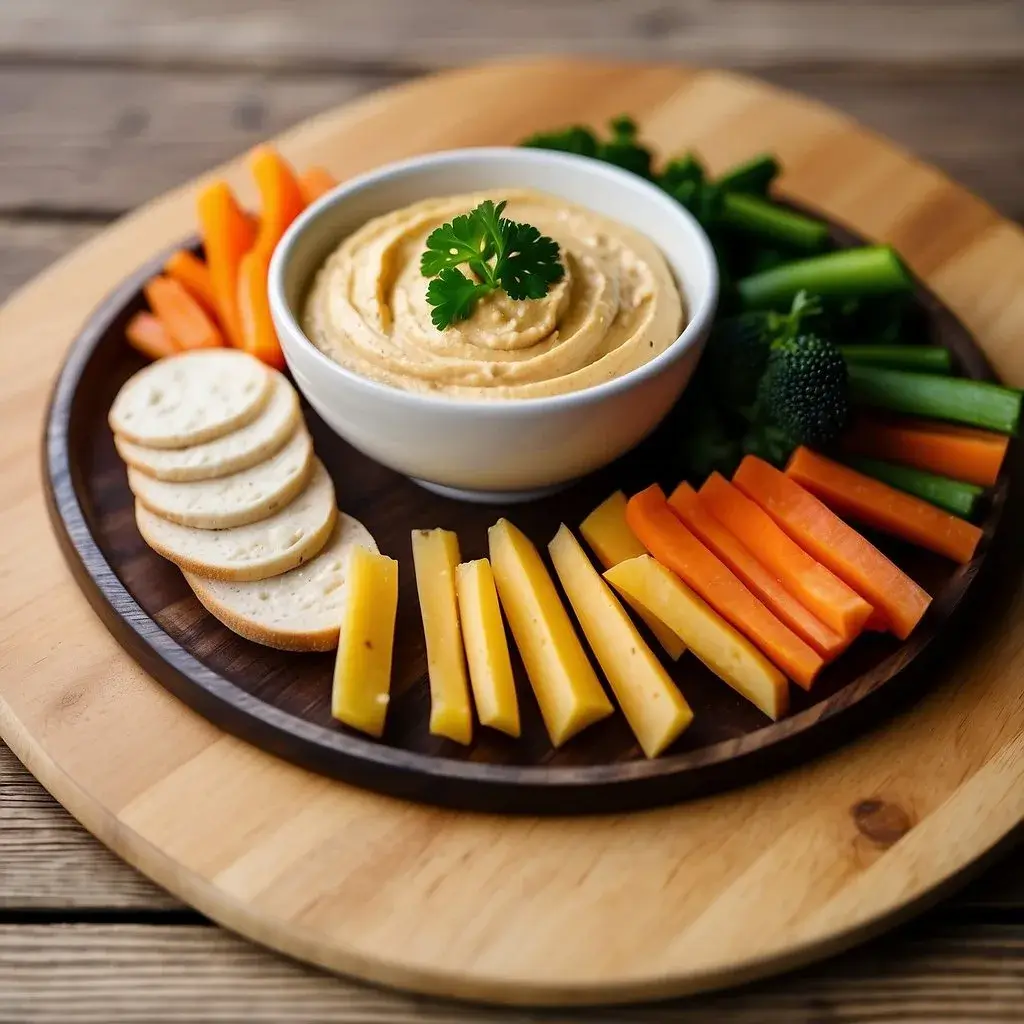
Sometimes a snack that’s crisp, simple, and almost effortless hits the spot. Fresh carrot sticks with hummus totally deliver.
They’re crunchy, cool, and satisfy that need to munch. Carrots travel well and don’t get squished in our backpacks.
We like slicing them ourselves instead of buying pre-cut ones. They taste sweeter and fresher that way, especially when they’re just peeled.
A small container of hummus pairs perfectly. We get protein, fiber, and a boost of energy for the next stretch of trail.
If we want to switch things up, we might add cucumber or bell pepper, but carrots always steal the show. Some of us even find DIY carrot sticks with hummus are more satisfying than store-bought baby carrots.
Give it a try next time you hike!
14) Roasted spiced pumpkin seeds

Let’s talk about roasted spiced pumpkin seeds—one of our favorite hiking snacks. These tiny, crunchy bites are full of flavor and super easy to pack.
We love tossing a handful into our backpack for a little pick-me-up. Making them at home is simple: scoop out the seeds, rinse, and let them dry.
We mix them with soy sauce, a bit of garlic powder, and a pinch of cayenne for a spicy kick. Roasting brings out a crispy texture that’s just so satisfying.
It’s easy to switch up the seasonings. Sometimes we go for sea salt and black pepper, or a touch of smoked paprika for a smoky flavor.
If you need ideas, check out these roasted spicy pumpkin seeds with soy sauce and garlic. Roasted pumpkin seeds are full of plant-based protein and healthy fats.
They’re just right when you want something light but filling. Plus, they make any trail mix more interesting.
15) Nature’s Bakery Fig Bars for easy snacking
When we’re on the trail, sometimes we just want an easy snack that’s ready to go—no fuss, no mess. That’s where Nature’s Bakery Fig Bars really shine for us.
These little bars have been a trail staple in our packs more than once. They fit right in our pockets and keep their shape, even if they get a little squished by a water bottle.
The chewy outside and soft, figgy center make them feel like a treat, without any dairy or nuts to worry about. Plus, they’re made with whole wheat and real fruit, so we feel good eating them.
We also love the variety—original fig, blueberry, raspberry, you name it. There’s something for everyone, which is great when we’re hiking with friends or family.
If you’re looking for a plant-based, dairy-free, and nut-free snack, these bars deliver every time. They’re super packable and don’t make a mess—even the crumbliest kids in our crew can eat them without disaster.
You’ll probably end up reaching for one during those midday snack breaks, just like we do.
16) Vegan protein powder mixed in trail smoothies

Packing vegan protein powder lets us turn any water bottle or shaker into a quick smoothie that keeps us moving.
We don’t have to haul heavy shakes. Just toss a serving or two into a small baggie and we’re set.
It’s easy to mix in whatever flavors we like. Sometimes we grab chocolate, other times something light like vanilla.
Add some powder to cold water, shake it up, and it’s ready. For a richer treat, mix it with plant-based milk or stir in instant oats or dried fruit.
Adding protein powder means our trail snacks aren’t just sweet—they’re actually filling. Brands made for hiking stay tasty and easy to digest, so we don’t feel weighed down.
A few of our favorites are made with ingredients like pea, hemp, and brown rice. Some even include extra fiber for staying power.
There are lots of plant-based options these days that are flavored, low in sugar, and even include prebiotics. It’s such an easy upgrade to our snack stash!
17) Pretzels with a Sprinkle of Sea Salt
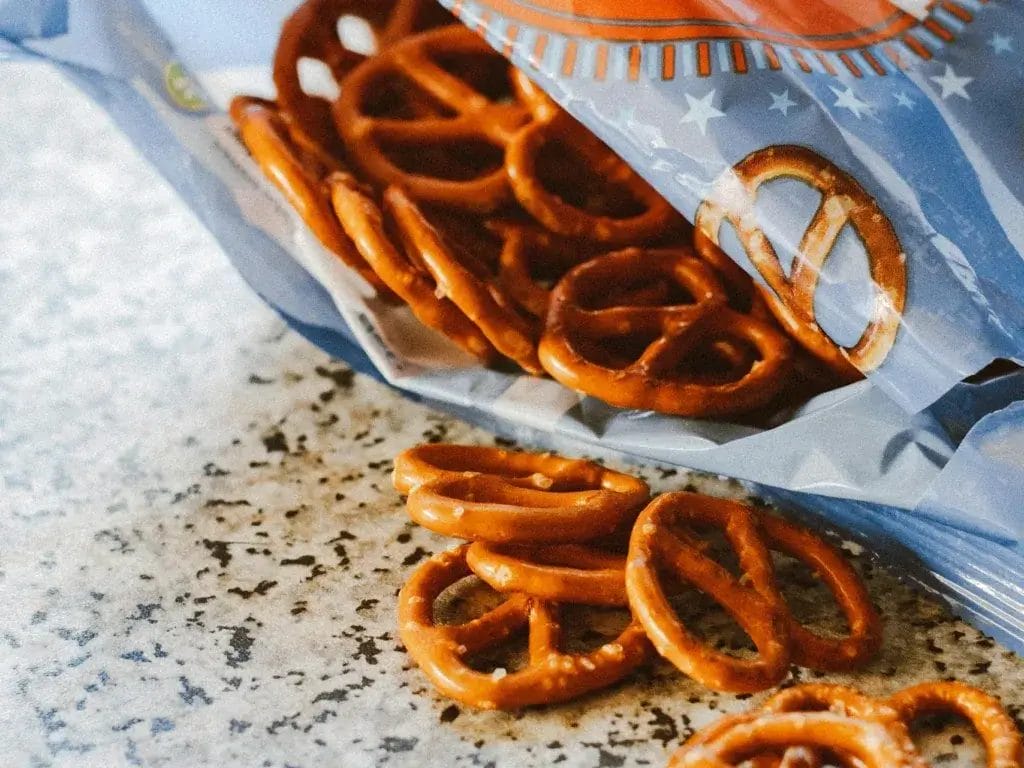
Pretzels never let us down when we’re packing hiking snacks. They’re crunchy, satisfying, and super easy to toss into our daypacks.
That simple sprinkle of sea salt brings out the best in these classic twists—just the right amount of flavor without going overboard. If we’re looking for a vegan-friendly option, there are plenty out there to choose from.
Some brands even use sea salt imported from Italy for that extra hint of quality, like these Stellar Snacks sea salt pretzels. If we’re trying to eat gluten-free or grain-free, we can grab pretzels made with cassava flour and chickpea protein, which taste amazing and still have that perfect crunch.
Pretzels with sea salt are a great pick-me-up when we need a salty bite on the trail. Plus, they’re not messy, so we don’t have to worry about sticky hands or crumbs everywhere.
18) Dark chocolate chips mixed into nuts and dried fruit
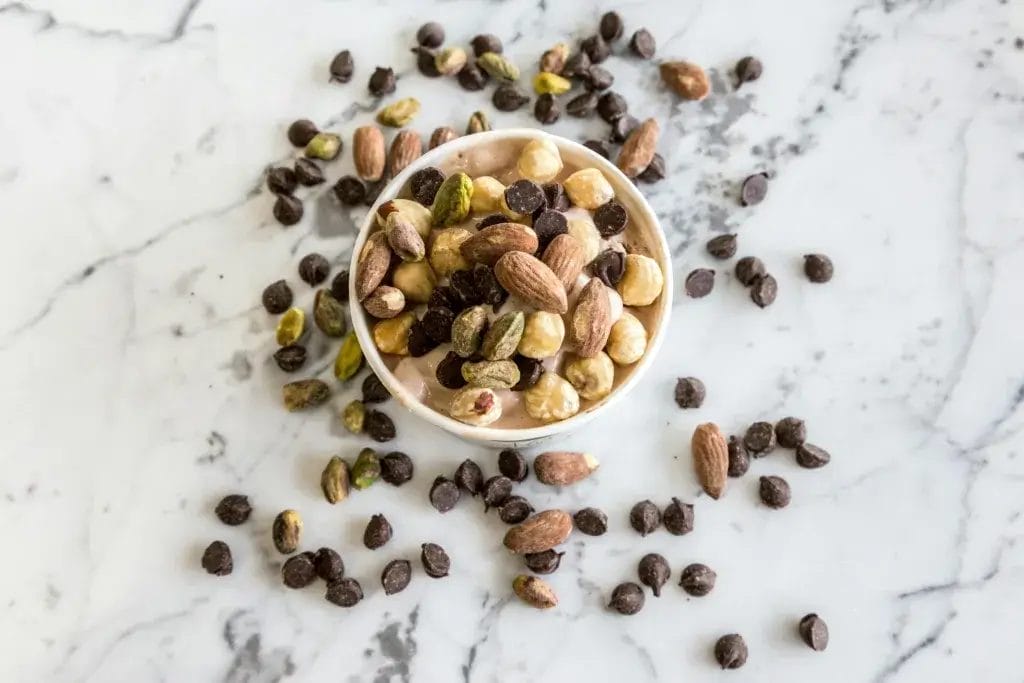
Some days we all need a little chocolate boost. Our go-to is tossing a handful of dark chocolate chips into a mix of nuts and dried fruit.
It’s sweet, satisfying, and keeps our snacks interesting. We like to use almonds, cashews, or roasted peanuts because they give us lasting energy.
Raisins or dried cranberries add a chewy, fruity pop that pairs perfectly with the deep flavor of dark chocolate. We’ve learned to choose dark chocolate chips that are dairy free, so everything stays fully vegan.
This combo is really easy to put together before a hike. Just scoop everything into a baggie or small container, and we’re out the door.
What’s great is how simple it is to tailor—everyone in our group can mix their favorite nuts and dried fruit. If you want a quick recipe idea, check out this vegan dark chocolate trail mix for inspiration.
19) Frooze Balls – fruity frozen snack bites
We know how tough it can be to find a hiking snack that’s both tasty and nourishing. That’s where Frooze Balls come in.
These little bites are packed with real fruit, nuts, and seeds, giving us a quick energy boost that actually tastes good. We love tossing a few Frooze Balls into our backpack before heading out.
They don’t get messy, and they’re easy to eat on the go. Plus, we never have to worry about added sugar because they’re sweetened naturally with dates and other fruits.
It’s refreshing to see snacks made from simple, whole ingredients. When we’re out on the trail, eating Frooze Balls feels like a treat, but we know we’re fueling our bodies well.
If you’re trying to avoid processed snacks, these make a great swap. Frooze Balls are plant-based and come in different flavors, so there’s usually something for everyone.
They’re also pretty easy to find online and in stores. If you’re curious about what makes them special, you can read more from the official Frooze Balls website.
20) Switchback Smoothie Mix for a quick drink
We all know how refreshing a smoothie can be after a long, sweaty hike. That’s where Switchback Smoothie Mix steps in.
These handy packets make it super easy to get a veggie and fruit boost on the trail—no blender required. All we have to do is mix a packet into water and shake it up.
The ingredients include real veggies like kale, spinach, beets, and carrots, along with the sweet taste of banana, pineapple, and mango. It feels good knowing we’re fueling our bodies with whole food, not just sugar.
We love how portable and mess-free these packets are. Sometimes, it’s hard to eat enough greens when we’re outdoors, so having Switchback Smoothie Mix in our packs makes it a lot easier.
The taste is bright and fruity—perfect when we want something cold and refreshing. Next time our group stops for a break, mixing up a smoothie is a fun way to keep things healthy and simple.
Boost your energy and immunity with Switchback—a nutrient-dense superfood packed with over 4 cups (6 servings) of vital fruits and veggies, delivering essential vitamins like Vitamin C (70% DV), Vitamin K (80% DV), and Magnesium (15% DV). Each serving provides 5+ grams of plant-based fiber to support healthy digestion, debloat, and keep you fuller longer, plus potassium for heart health. In less than 60 seconds, you can fuel your body with real, wholesome produce to transform your health and feel your best every day.
Making Vegan Snack Choices for the Trail
When we’re getting ready to head out on a hike, it’s not just about grabbing anything plant-based. We want snacks that taste great, keep our energy steady, and don’t slow us down.
By choosing wisely and getting organized before we go, we can make our trail experiences smoother and more enjoyable.
Balancing Nutrition and Flavor

We all know that hiking burns serious calories, so our snacks need to pack a punch. It’s a good idea to look for foods with a mix of complex carbs, protein, and healthy fats.
This combo keeps us feeling full and helps avoid that energy crash. Some of our favorites are trail mix with nuts, seeds, and a bit of dried fruit, or roasted chickpeas for a crunchy, protein-rich bite.
Homemade energy bars with oats, dates, and nut butter tick both the tasty and nutritious boxes. For quick carbs and a hint of sweetness, dried mango or apple slices can work wonders.
Don’t forget about salt, especially on sweaty hikes. Salty snacks like pretzels or lightly salted popcorn are nice to have in our packs.
If we like a bit of spice, there are plenty of vegan jerky options with bold flavors that wake up our taste buds. There are plenty of delicious vegan snack ideas to mix things up when we want to try something new.
Prepping Ahead for Stress-Free Outings
A little prep makes a big difference when we hit the trail early. We like to portion out snacks into small, resealable bags or containers before our trip.
This way, we don’t have to dig through our backpacks or worry about messy spills. Making snacks at home lets us control the ingredients.
If we’re pressed for time, store-bought energy bars or trail mix are easy to grab. For those who enjoy DIY, whipping up a batch of energy bites or roasting chickpeas takes just a few minutes.
Here’s a simple checklist we use:
- Pack snacks that won’t melt or get crushed.
- Use lightweight, reusable bags or containers.
- Add a mix of salty, sweet, and savory options.
- Bring a little extra in case we stay on the trail longer than planned.
Storage, Safety, and Packing Tips
When we’re out on the trail, we want our snacks to stay fresh and safe to eat. Good packing also means less mess and less waste, so we can focus on enjoying the views instead of worrying about our food.
Keeping Snacks Fresh on the Go
Nobody wants a soggy sandwich or a crumbled granola bar halfway through the hike. Using reusable airtight containers or sturdy silicone bags helps keep our snacks crisp and protected.
For trail mix, nuts, and seeds, small containers or Ziploc bags are light, take up less space, and double as organizers for other gear if we need them later. They’re mentioned as handy options for food packing in ultralight backpacking forums.
It’s smart to pack delicate foods like berries or homemade bars at the top of our backpack. We’ll want to keep moisture-sensitive foods away from ice packs, if we use any, so they don’t get soggy.
If we’re out all day in the sun, an insulated lunch bag can go a long way toward keeping chocolate or nut butter from melting everywhere. We should also bring snacks that are less likely to spoil.
Dried fruits, roasted nuts, and shelf-stable snacks like vegan jerky last for days and are super simple to pack. Bringing hand wipes or a travel-size hand sanitizer is really helpful for quick cleanup before we dig in.
Eco-Friendly Packing Ideas
It feels good to know our snack choices are kind to the planet, too. We can swap disposable plastic for reusable beeswax wraps, stainless steel containers, or compostable paper bags.
Silicone zip bags, especially, are lightweight and easy to rinse out at camp or when we get home. For a packing list that’s friendly to nature, we could try wax wraps for sandwiches, metal tins for dried fruit, and cloth snack bags for crackers or nuts.
For larger group hikes, we might even bring a shared snack box to reduce packaging waste. These ideas keep our packs lighter and our footprint smaller.
We should also remember to “leave no trace.” That means planning ahead to pack out everything we bring, even if it’s compostable.
Small trash bags or empty snack wrappers go back in our pack until we find a proper spot to toss them. This way, we leave the trail just as beautiful as we found it.
For more ideas on sustainable packing, check out tips for vegan travel essentials.
Frequently Asked Questions
Figuring out the best vegan snacks for hiking is all about packing tasty, simple fuel that actually works for us on the trail. We can cover energy, protein, freshness, and flavor if we think ahead and try a mix of store-bought and homemade options.
What energizing vegan treats can I pack for a long hike?
We’re always on the hunt for snacks that boost energy and actually taste good. Clif Bars and Luna Bars are super convenient—you just grab one and toss it in your pocket.
If you’d rather make something yourself, trail mix with cashews, cranberries, and dark chocolate is a classic. It keeps us going and never feels too heavy.
If you want more ideas, this list of vegan hiking snacks rounds up simple, energizing options for any hike.
Can you suggest some portable plant-based snacks for outdoor adventures?
Nuts and dried fruit are easy to pack and don’t make a mess. Roasted chickpeas or corn nuts give a satisfying crunch and don’t get crushed in backpacks.
Sometimes we reach for vegan granola bars since they’re packed with good stuff and don’t take up much space. I mean, who doesn’t love a snack that’s both healthy and easy?
For more tried-and-true ideas, check out these vegan trail snacks for travel that are great for the outdoors, too.
What are your favorite protein-rich vegan nibbles for trail sustenance?
Roasted chickpeas have rescued us more than once when hunger hits hard. Vegan jerky is a favorite when we crave something chewy with bold flavors.
If we’re in the mood to experiment, homemade nut and seed bars can be loaded with protein. Plus, it’s kind of fun to make your own mix.
How do I keep my vegan hiking snacks fresh and delicious during a trip?
We stick with snacks that won’t spoil in the heat, like trail mix, nuts, and bars. Packing them in airtight bags helps keep everything crisp.
We skip anything with too much moisture—those get soggy or spoil fast. A small insulated pouch can keep chocolate from melting, and tossing a silica gel pack in with snacks helps fight off moisture.
Could you recommend some homemade vegan snacks that are easy to carry?
Granola bars with oats, dates, and nuts are a go-to since they’re sturdy and not overly sticky. Energy balls made with oats, nut butter, and chocolate chips come together fast and taste amazing.
Dehydrated kale chips or fruit leather are awesome homemade snacks that can handle a bit of rough travel. Homemade vegan trail snacks let us get creative with flavors and ingredients, too.
What are some savory vegan options for satisfying munchies on the trail?
Vegan jerky packs a punch with umami. It keeps us from getting bored of sweet snacks, which is honestly a relief.
Roasted chickpeas with smoked paprika or garlic powder really hit the spot when you want something salty. Sometimes I just toss them in my bag and munch as I go.
We also love rice cakes, whether plain or flavored. They’re light, crispy, and honestly perfect for layering with a swipe of nut butter or tahini.
For more savory favorites, check ideas in this vegan hiking snack roundup.air them with single-serve hummus cups for protein and flavor.













